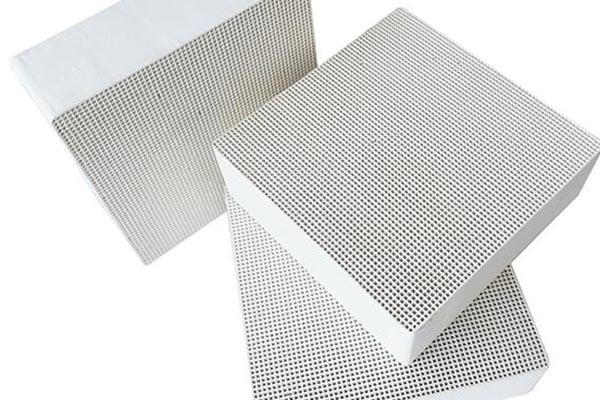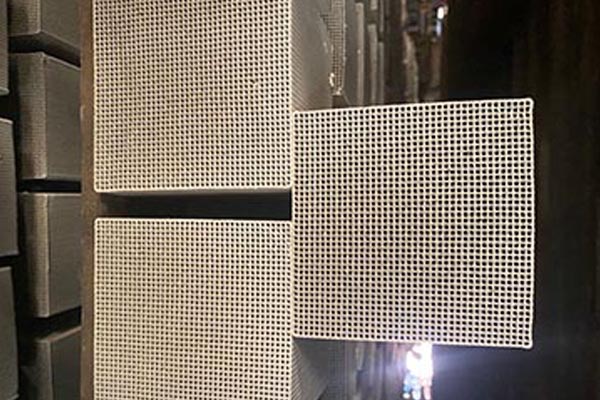
Honeycomb zeolite molecular sieve is an efficient molecular sieve carrier with good adsorption performance, no secondary pollution and high temperature regeneration. It is widely used in the fields of adsorption, separation, catalysis and environment, Activated Carbon high quality It is more suitable for the treatment of organic waste gas with large air volume and low concentration. It is widely used in the production of basic organic chemical industry and petrochemical industry, as well as in the treatment of harmful gases, SO2 NOx、CO、CO2,NH3,CCl4、 Purification of water vapor and gaseous hydrocarbon waste gas. Strong adsorption selectivity: molecular sieve materials with different properties and pore sizes are configured for the product according to the different components of organic waste gas, so as to achieve targeted and selective treatment of organic waste gas, meet the design requirements and meet the emission standards. 2. Strong adsorption capacity: even if the gas composition concentration is very low at the mg level, it still has the adsorption capacity. The efficiency is 50% higher than that of similar activated carbon. 3. Wide adaptability of adsorption temperature: at a higher temperature, it still has a large adsorption capacity, while other adsorbents are greatly affected by temperature, so under the same temperature, the adsorption capacity of molecular sieve is large. 4. Good regeneration temperature resistance: the concentration ratio of pollutants after adsorption and concentration by molecular sieve can reach 15 to 20 times, and the concentrated waste gas can be condensed and recovered or burned at high temperature as required 5. High strength: Activated Carbon Direct selling Products coming to the company use special framework materials to make the positive pressure strength of honeycomb zeolite reach more than 3Mpa, which can reduce damage during transportation and installation.

High silica zeolite type molecular sieves, this kind of zeolite has a series, and ZSM-5 is widely used, with ZSM-8 and ZSM-11 having the same structure; The other group is ZSM-21, ZSM-35 and ZSM-38. ZSM-5 is often called high silica zeolite, with the Si/Al ratio up to 50 and ZSM-8 up to 100. This group of molecular sieves also shows hydrophobic characteristics. Activated Carbon Direct selling Their structural units are similar to those of mordenite, consisting of pairs of five membered rings, with no cage like cavities and only channels. ZSM-5 has two sets of cross channels, one is straight through, the other is zigzag perpendicular to each other, both formed by ten yuan rings. The channel is oval and its window diameter is (0.55-0.60) nm. Activated Carbon high quality Zeolites belonging to the high silicon group also have silicalite-1 of all silicon type, which has the same structure as ZSM-5, and silicalite-2 is the same as ZSM-11.

The main components of zeolite are: silicon and aluminum, which have adsorption capacity and can be used as adsorbent; Zeolite runner is to use the specific pore size of zeolite to have the ability of adsorption and desorption for organic pollutants, so that VOCs waste gas with low concentration and large air volume can be concentrated and converted into low air volume and high concentration gas by the zeolite runner, which can reduce the operating cost of the back-end final treatment equipment. Activated Carbon Pingxiang The characteristics of the device are suitable for treating waste gas with large flow, low concentration and various organic components. The disadvantage is high initial investment. The zeolite wheel adsorption purification device is a gas purification device that can continuously perform adsorption and desorption operations. The two sides of the zeolite runner are divided into three areas by special sealing devices: adsorption area, desorption (regeneration) area and cooling area. Activated Carbon high quality The working process of the system is as follows: the zeolite runner rotates continuously at a low speed and circulates through the adsorption area, desorption (regeneration) area and cooling area; When the exhaust gas with low concentration and large air volume continuously passes through the adsorption area of the runner, VOCs in the exhaust gas are adsorbed by the zeolite of the runner, and the gas purified by adsorption is directly discharged; The organic solvent adsorbed by the wheel is sent to the desorption (regeneration) area with the rotation of the runner, and then the small amount of hot air continuously passes through the desorption area. The VOCs adsorbed on the runner are thermally desorbed in the desorption area to achieve regeneration, and the VOCs waste gas is discharged together with the hot air; After the runner is transferred to the cooling area for cooling, the adsorption can be carried out again. With the continuous rotation of the runner, the adsorption, desorption and cooling cycles are carried out to ensure the continuous and stable operation of waste gas treatment.

Honeycomb zeolite molecular sieve is a kind of aluminosilicate material containing alkali metal or alkaline earth metal oxide with open framework and regular pore cage structure. It has been widely used since it was discovered by Swedish scientists in 1956, and then it has been widely used in petrochemical industry, environmental protection, bioengineering and other fields due to its special physical characteristics. Activated Carbon high quality And with the gradual expansion of the demand for zeolite molecular sieves, researchers began to expand a variety of synthetic methods of zeolite molecular sieves to meet the needs of various fields. Zeolite molecular sieve has super strong adsorption performance, which is due to a "surface force" generated by molecular gravity on the solid surface. When the fluid flows, some molecules in the fluid collide with the adsorbent surface due to irregular movement, resulting in molecular concentration on the surface, reducing the number of such molecules in the fluid to separation Purposes of clearing. Activated Carbon Direct selling Since the adsorption does not undergo chemical changes, as long as the molecules concentrated on the surface are managed to drive away, the zeolite molecular sieve will have the adsorption capacity again. This process is the reverse process of adsorption, which is called the resolution or regeneration process.



